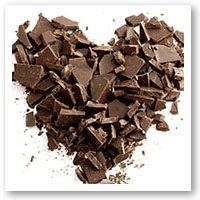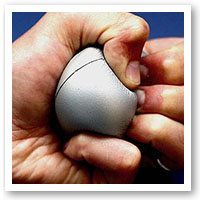Chocolate!
 You have probably heard or read that chocolate can be beneficial for your health. In pre-Columbian Mesoamerica, chocolate was considered a “food for the gods”, was used in religious rituals and cacao beans were such a previous commodity that they were even used as a form of currency.
You have probably heard or read that chocolate can be beneficial for your health. In pre-Columbian Mesoamerica, chocolate was considered a “food for the gods”, was used in religious rituals and cacao beans were such a previous commodity that they were even used as a form of currency.
Today we are fortunate that chocolate is readily available, but the big problem is that a lot of commercial chocolate you buy is full of things that are best avoided… such as hydrogenated vegetable oils, sugar, artificial sweeteners, additives, preservatives, colours, flavour, powdered milk solids, and much more.
There is a lot of exciting research coming to light about raw cacao, and the benefits of the cacao bean and dark chocolate. These benefits extend to the heart, vascular system, brain, aging, mood and energy. This is in some part due to the fact that raw cacao is abundant in antioxidants, minerals, vitamins and many unique properties. Cacao contains twice the antioxidant content of red wine, and up to three times that of green tea. These antioxidants can improve cognitive impairment and produce nitric oxide with some great cardiovascular benefits.
The ORAC Score measures the benefits of antioxidants. Here is a comparison of the ORAC score per 100 grams for some common foods known to have a high antioxidant level, listed in descending order.
- Dark Chocolate – ORAC 13,120
- Milk Chocolate – ORAC 6,740
- Prunes – 5,770
- Raisins – 2,830
- Blueberries – 2,400
- Blackberries – 2036
- Kale – 1,770
- Strawberries – 1540
- Spinach – 1260
- Raspberries – 1220
- Brussel Sprouts – 980
- Broccoli – 890
Another important nutrient found in cacao is theobromine (a chemical related to caffeine). Theobromine was discovered in cacao and a few other plants in the 19th century, by 1916 it had been extracted from the bean and was being used in medical treatment for oedema and angina. In modern medicine the compound theobromine is used as a vasodilator, this means it can dilate smooth muscle such as the blood vessels, bronchial tubes, large intestine. It is also used as a diuretic and heart stimulant. Recent research shows the effects of how theobromine can lower blood pressure as well as help with asthma.
Unlike caffeine, theobromine does not have an addictive nature or have the same strong affects as caffeine has on the nervous system. The cacao bean can have up to 10% of its weight made up of theobromine, the effects of the theobromine on the body can be up to 6 – 10 hours after consumption.
Importantly, as many of you will attest, chocolate enhances the mood and boosts energy.
So what is the best way to obtain the benefits of chocolate without the nasty hydrogenated fats and processed sugars? Raw cacao powder is now readily available in health food stores, along with raw cacao chocolate bars in an amazing variety of flavours.
Or experiment and make your own raw chocolate truffles. These make great Christmas presenters and look great packaged up in a pretty box or cellophane wrap and ribbon.
Raw Chocolate Truffles
Ingredients
- 1/2 cup of sunflower seeds (or any other seeds you have on hand)
- 1/2 cup walnuts (or any other nuts you have on hand – cashews are wonderful too)
- 1/2 cup dates
- 1/8 teaspoon sea salt
- 4 tablespoons raw cacao powder
Method
- Process the nuts in the food processor. Keep processing them until you can’t see the nuts anymore, but stop processing before they get too soft looking.
- Add the dates, sea salt and cacao powder. Process again until everything is well mixed and clumped together.
- Roll the balls in your hand and form balls. You may also like to roll the completed truffles in goji berries, coconut, cacao powder, etc.
These keep well in the fridge.

 Stress is a term commonly used everyday, it is usually considered a negative concept that has some impact on one’s mental or physical wellbeing, but it can be either the cause or the effect.
Stress is a term commonly used everyday, it is usually considered a negative concept that has some impact on one’s mental or physical wellbeing, but it can be either the cause or the effect.